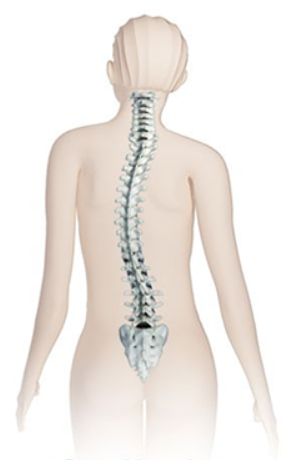What is Scoliosis?
Scoliosis is an abnormal curvature of the back along the coronal plane i.e its a deformity of the spine where it curves abnormally sideways. While most kinds are nonfatal, if not detected and treated, scoliosis can progress, affecting the lower back, accelerating wear and tear further down the spine and severely compromise quality of life.
Scoliosis can occur in any age group whether in infancy, adolescence or adulthood and is classified accordingly.
Infantile Scoliosis
This affects children under the age of 3 and has a whole range of causes. It could be due to an abnormally developed back bone at birth. It can also develop as a result of other serious congenital or neurodegenerative disorders (cerebral palsy, tethered spinal cord, myelomeningoceles, etc.).
Juvenile or Adolescent Scoliosis
This occurs in the 3 to 10 year age group. Since this coincides with a period of rapid growth in the life of an individual, Juvenile Scoliosis tends to advance rapidly. It may slow down as growth slows. However, given the delicate state of the child’s body, surgery might not be possible at this age.
Adolescent Idiopathic Scoliosis
The most common form of scoliosis occurs in patients in the age group of 10 to 17 years. As the word ‘idiopathic’ implies, there is (thus far) no identifiable cause for it. Adolescent Idiopathic Scoliosis has a broad variety of symptoms and affects patients with varying degrees of severity. It tends to occur in the thoracic spine (above lower back and below the level of the neck) and is not usually painful except in some extreme cases.

Adult Degenerative Scoliosis
This is a form of scoliosis which seems to be on the rise. It occurs in adults with the onset of degenerative arthritis in the lumbar spine. It is not a relapse of any kind since these are patients who never had scoliosis as children. As time progresses, it becomes worse with pain and compression of the nerve(s) from spinal stenosis.
Symptoms
Parents should watch out for warning signs – a little hump on the back or rib, hair along the spine or perhaps a foot problem. A school screening program has been able to detect most of these problems early. Some of the symptoms are:
- Differing (or uneven) shoulder heights
- Head not centred on the axis of the body
- An uneven waistline
- Tilted pelvis
- Difficulty breathing
- Difficulty walking
- Hunchback
- Pain of the back

